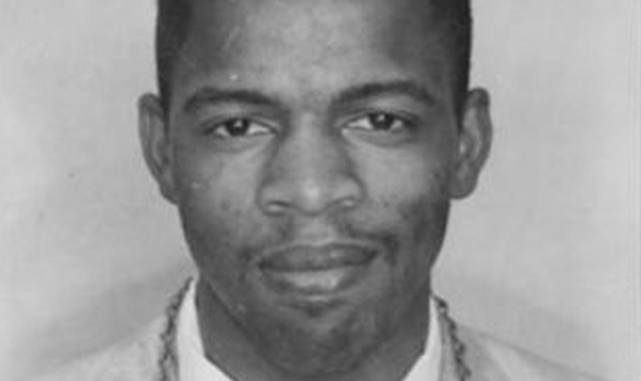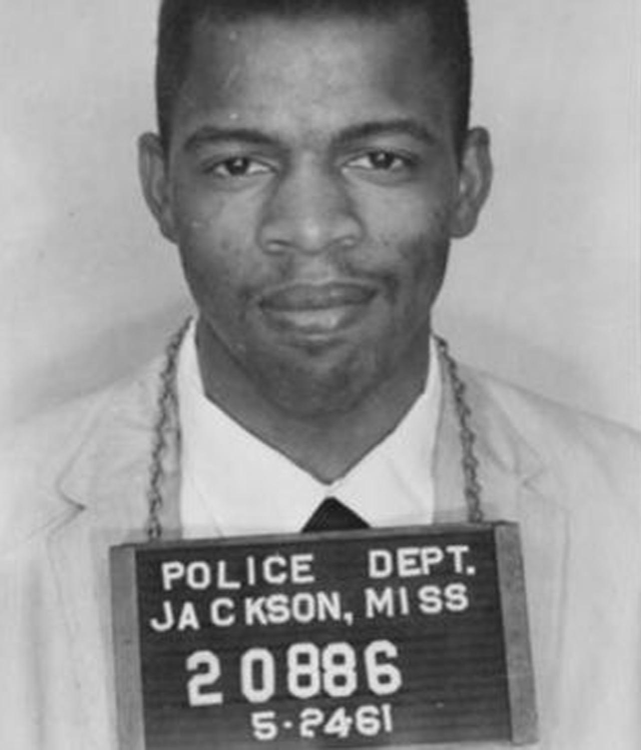
By Edelia Dr. Jay Carthan,
Contributing Writer,

John Lewis was only 21 years-old in the famous mugshot seen around the world when he was arrested in Jackson, Mississippi for using a restroom labeled “whites only.”
As the nation mourns the loss of a civil right icon, let us not forget the footprints Lewis left on the nation, especially Mississippi. Lewis was arrested along with 27 other Freedom Riders in Jackson after they entered a “whites only” area of the city’s segregated bus station and refused to leave. He spent 37 days in the notorious Mississippi State Penitentiary at Parchman on charges of disorderly conduct. He was finally released on July 7, 1961.
Lewis was born February 21, 1940 outside of Troy, Alabama and quickly became involved in the civil rights movement as a teenager. Angered by the unfairness of the Jim Crow South, Lewis launched what he called “good trouble” which included organized protests, sit-ins, arrests and beatings.
In 1957, Lewis left home and attended American Baptist Theological Seminary in Nashville, Tennessee. It was there, he learned about nonviolent protest and helped organize sit-ins at segregated lunch counters. He was arrested during many of these demonstrations.
In 1963, Lewis became chairman of the Student Nonviolent Coordinating Committee or SNCC. SNCC organized voter registration drives aimed at increasing the number of registered black voters in the south.
Lewis was one of the “Big Six” leaders of the civil rights movement who helped plan the March on Washington for Jobs and Freedom August 28, 1963 where Dr. Martin Luther King Jr. delivered his famous “I Have a Dream” speech. Leaders selected August 28 as the date of the march in remembrance and honor of 14 year-old Emmett Louis Till who was kidnapped, beaten and murdered in Money, Mississippi for whistling at a white woman.
Freedom Summer or the Mississippi Summer Project was a successful voter registration drive that was organized by SNCC. The work of Bob Moses, John Lewis, King and others led to the passage of the Civil Rights Act of 1964.
During that time, African Americans still had a hard time voting in the south. To bring attention to this issue, Lewis teamed up with Hosea Williams to lead a march from Selma to Montgomery, Alabama March 7, 1965. Marchers were attacked by state troopers after crossing the Edmund Pettus Bridge in Selma. Lewis was severely beaten and suffered a fractured skull. This day was dubbed Bloody Sunday because of the blood shedded. News cameras captured the beatings and the world witnessed this unjust act which ultimately led to the passage of the Voting Rights Act of 1965.
Lewis was elected to the Atlanta City Council in 1981 before serving in the House of Representatives. Lewis was elected and served 17 consecutive terms in the United States Congress representing Georgia’s 5th congressional district since 1987.
Lewis, during his tenure in office, fought for education, healthcare reform, poverty, gun control and more. The Supreme Court struck down part of the Voting Rights Act in the 2013 case, Shelby County v. Holder. Lewis expressed that the decision was a “dagger into the heart” of voting rights.
Lewis died July 17 in Atlanta, GA from pancreatic cancer. Lewis announced in December 2019 that he had been diagnosed with pancreatic cancer.
Following a short ceremony outside of Brown Chapel AME Church Sunday, Lewis’ body traveled on a horse-drawn carriage across the Edmund Pettus Bridge in Selma, Alabama.
Lewis is the first black lawmaker to lie in state at the US Capitol Rotunda according to congressional historians. How ironic or maybe even iconic that the raised box that once supported the president that issued the Emancipation Proclamation that freed the slaves in the south now supported the first black lawmaker to lie in the state in the Rotunda, a lawmaker that dedicated his life to fighting for freedom, voting rights and justice for African Americans.
President Trump, unlike most respectable presidents, did not visit the Capitol to honor the late civil rights icon. A cross-section of influential lawmakers did show up to pay respects to the civil rights icon before his body was moved for public viewing.
Members of the Congressional Black Caucus wore masks that read, “Good Trouble” as a tribute to Lewis. Speaker Nancy Pelsoi gave remarks during the emotional ceremony Monday afternoon. “Under the dome of the US Capitol, we have bid farewell to some of the greatest Americans in our history. It is fitting that John Lewis joins this pantheon of patriots.”
During Pelosi’s remarks, she quoted John Lewis’ 2014 commencement address at Emory University in Atlanta where he encouraged students to “find a way to get into trouble – good trouble, necessary trouble.”
Republican Senator and Major Leader, Mitch McConnell quoted Dr. Martin Luther King Jr., a personal friend of Lewis, who once said that “the arc of the moral universe is long, but it bends towards justice. But that is never automatic. History only bent toward what’s right because people like John paid the price to help bend it,” McConnell expressed.
Lewis was an American politician and civil rights leader who spent his life being a champion for justice, voting rights and civil rights throughout his lifetime.
He was a member of countless organizations including Phi Beta Sigma Fraternity, Inc. He was honored with the Presidential Medal of Freedom by President Barack Obama in 2011. His life and work were recently chronicled in Dawn Porter’s documentary, “John Lewis: Good Trouble.”
John Lewis will lie in state in the Georgia State Capitol Rotunda Wednesday, and will be laid to rest Thursday, July 30, at a private ceremony at Ebenezer Baptist Church in Atlanta, Georgia.
John Lewis’ legacy will live forever.

Be the first to comment